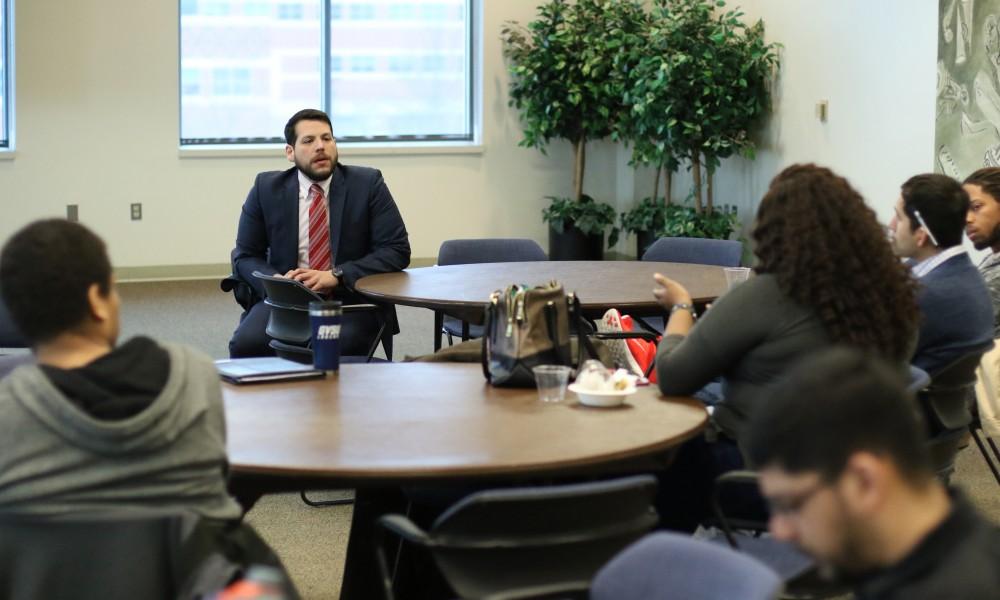Campus climate results show further research needs to be done

GVL / Drew Howard Vice President for Inclusion and Equity Jesse Bernal reviews the results of the Campus Climate Survey Tuesday, March 22, 2016 inside of Grand Valley’s Kirkhof Center.
Mar 24, 2016
Jesse Bernal, vice president of the Division of Inclusion and Equity, expressed both positivity and a desire for more inclusivity during a discussion of the 2015 Campus Climate Survey preliminary results on March 22.
Although the results of the survey were already revealed in late February, Bernal hosted an intimate discussion with a small group of students, faculty and staff members to delve further into the statistics.
Bernal said one of the survey’s biggest achievements was the 42 percent participation rate, the highest turnout rate in the history of the Campus Climate Survey. The report also revealed that 70 percent of respondents believe GVSU to be more committed to diversity in 2015 than 2005.
With this record-breaking turnout rate came new statistics about different minority groups on campus, including the LGBT community and those living with disabilities.
According to the data, a shocking 25 percent of respondents said they had a disability that was either physical, psychological, affected their learning or was undefined.
“This number is very surprising because according to those registered with disabilities services, only 7 percent say they have a disability,” Bernal said. “That’s much different than what we believed our population to be.”
The data also revealed that 1 percent of respondents identify as transgender or other, an increase from the 0.3 percent found in the 2011 survey. Meanwhile, 8 percent said they identified as something other than heterosexual.
In the general population, 87 percent said they felt “very comfortable” or “comfortable” on campus. However, the numbers were less positive among other groups.
Among individuals who identify as transgender or other, 59 percent said they were “very comfortable” or “comfortable” on campus. As for people of color, 75 percent responded the same.
For some, this sense of uncomfortableness was more than just a feeling. Among those who identify as transgender or other, 40 percent reported personal experiences with a negative or hostile incident.
In the LGBQA community, 26 percent responded the same, followed closely by those with disabilities (24 percent) and people of color (21 percent).
Following the presentation of the data, Bernal took time to outline strategies moving forward to create a more inclusive campus.
Bernal said the Division of Inclusion and Equity will take a more strengths-based approach in the future, meaning they will identify strongly-inclusive zones on campus that can then be replicated in other areas.
“If we find the racial climate for undergraduate students in the Brooks College is extraordinarily comfortable compared to other colleges, we want to know what’s going on there and how to replicate it across the board,” Bernal said.
Bernal added that future research will aim to be more detailed in order to effectively combat oppression on campus.
“What we’ll be able to share in the next round of findings is what exactly was that negative experience,” he said. “For example, who committed that negative experience.? Was it a faculty member on a student or was it a student on student? Was it in a classroom or residence hall? Was it language or a physical attack?”
Andrew Plague, an intern in the Division of Inclusion and Equity, said it’s important for fellow students to do their part in creating a campus that’s both positive and affirming of all identities.
“In this phase of the project, it is really important for folks to get involved so that they can be part of analyzing and making sense of the data as well as determining what steps should be taken to remedy some of the issues highlighted in the data,” Plague said.





















